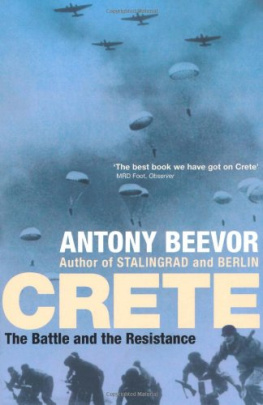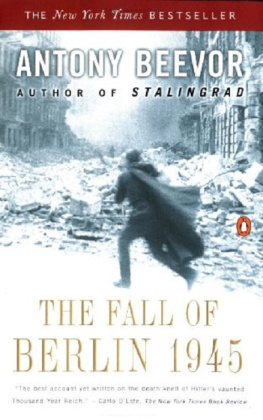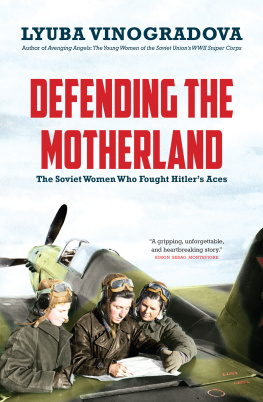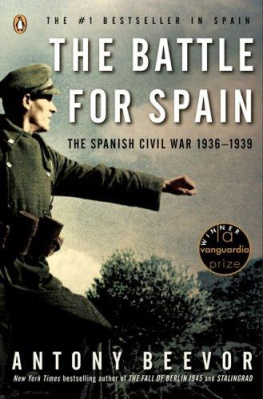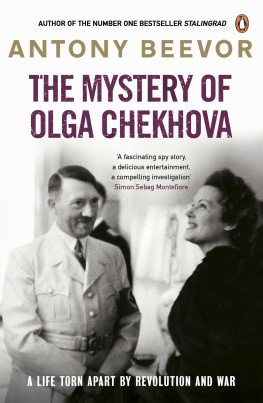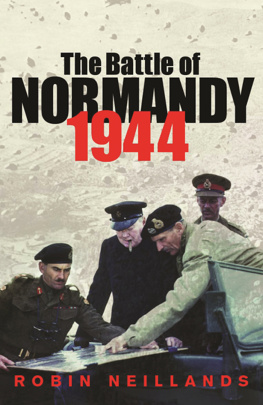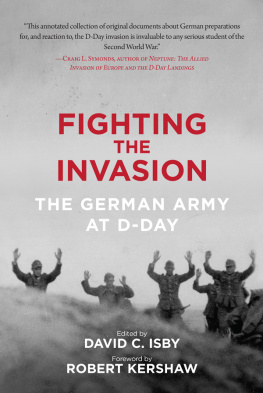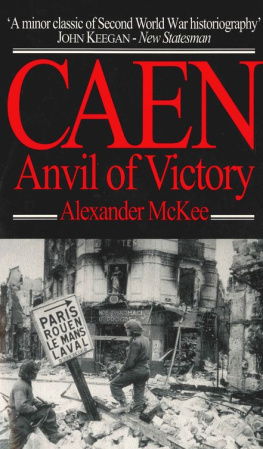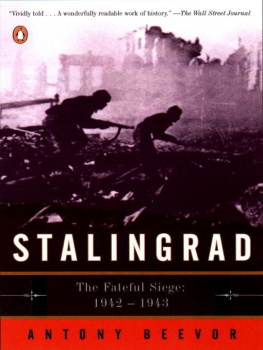D-DAY
THE BATTLE FOR NORMANDY
Antony Beevor
VIKING
an imprint of
PENGUIN BOOKS
VIKING
Published by the Penguin Group
Penguin Books Ltd, 80 Strand, London WC2R 0RL , England
Penguin Group (USA) Inc., 375 Hudson Street, New York, New York 10014, USA
Penguin Group (Canada), 90 Eglinton Avenue East, Suite 700, Toronto, Ontario, Canada M4P 2Y3
(a division of Pearson Penguin Canada Inc.)
Penguin Ireland, 25 St Stephens Green, Dublin 2, Ireland
(a division of Penguin Books Ltd)
Penguin Group (Australia), 250 Camberwell Road, Camberwell, Victoria 3124, Australia
(a division of Pearson Australia Group Pty Ltd)
Penguin Books India Pvt Ltd, 11 Community Centre, Panchsheel Park, New Delhi 110 017, India
Penguin Group (NZ), 67 Apollo Drive, Rosedale, North Shore 0632, New Zealand
(a division of Pearson New Zealand Ltd)
Penguin Books (South Africa) (Pty) Ltd, 24 Sturdee Avenue, Rosebank, Johannesburg 2196, South Africa
Penguin Books Ltd, Registered Offices: 80 Strand, London WC2R 0RL , England
www.penguin.com
First published 2009
Text copyright Ocito Ltd, 2009
Maps copyright John Gilkes, 2009
The moral right of the author has been asserted
All rights reserved
Without limiting the rights under copyright reserved above, no part of this publication may be reproduced, stored in or introduced into a retrieval system, or transmitted, in any form or by any means (electronic, mechanical, photocopying, recording or otherwise), without the prior written permission of both the copyright owner and the above publisher of this book
ISBN: 978-0-14-195926-9
BY THE SAME AUTHOR
Inside the British Army
Crete: The Battle and the Resistance
Paris After the Liberation
(with Artemis Cooper)
Stalingrad
Berlin: The Downfall
The Mystery of Olga Chekhova
The Battle for Spain
For Miles, my oldest friend
List of Illustrations and Maps
MAPS
Glossary
To help clarify the distinction between German and Allied divisions in the text, I refer on the one hand to the 352nd Infanterie-Division (German) or on the other to the 90th Infantry Division (American). The German version here is, of course, a slight hybrid in German it would be the 352. Infanterie-Division.
When it comes to regiments, it should be remembered that references to a British or Canadian regiment imply a single battalion. An American or German regiment, on the other hand, usually included three battalions and was the size of a brigade.
| BCRA | Bureau Central de Renseignements et dAction: General de Gaulles secret and special operations service, led by Colonel Andr Dewavrin, known by his nom de guerre of Passy. |
| dense Norman countryside of small fields surrounded by large hedgerows on thick banks, often with sunken lanes in between. |
| US amphibious transport vehicle built by General Motors. |
| Forces Franaises de lIntrieur: organization of the Resistance into the semblance of an army under the command of General Koenig in London. |
| slang for a member of the FFI. |
| Francs-tireurs et Partisans: Communist-led part of the Resistance. |
| German abbreviation of Hilfsfreiwillige or volunteer: mainly Soviet prisoners of war who had been coerced through starvation in camps to serve the German army as auxiliaries. A few became passionately loyal to their German masters. Those captured by the Allies were returned to Stalin. Some were shot, but most died in labour camps. |
| Jger | German Army equivalent of light infantry or chasseurs. |
| American, British and French three-man teams, consisting of two officers and a radio operator, parachuted into France before and during the battle for Normandy, their task being to train and advise Resistance groups. |
| Made by Volkswagen, this was the Wehrmachts slightly larger and heavier counterpart to the Jeep. |
| landing craft tank. |
| landing ship tank. |
| German equivalent of a GI or ordinary soldier, but usually indicating an experienced front-line infantryman. |
| (as in 91st Luftlande-Division) German air-landing division trained to land in gliders in support of a drop by Fallschirmjger or paratroop units. |
| Oberbefehlshaber West, or Commander-in-Chief West: designation of the headquarters of Generalfeldmarschall Gerd von Rundstedt (and later Generalfeldmarschall von Kluge) at Saint-Germain-en-Laye, just outside Paris. |
| Oberkommando des Heeres: the Supreme Command of the Army, which in practical terms was responsible for the eastern front. |
| Oberkommando der Wehrmacht: the Supreme Command of the Wehrmacht, which directed all other theatres, especially OB West, during the battle for Normandy. |
| Organisation de Rsistance de lArme: the most conservative wing of the Resistance, stemming from those French troops permitted by the Armistice who set up their own groups following the German reoccupation of the demilitarized zone in November 1942. |
| Office of Strategic Services: American counterpart to SOE. |
| a battalion formed from Osttruppen . |
| Eastern troops: former Red Army prisoners of the Germans, mostly from General Vlasovs ROA, who served in German uniform under German officers and NCOs in France. |
| the simple and effective shoulder-launched anti-tank rocket-propelled grenade mass-produced for German infantry. |
| slang for Jeep. |
| Projector Infantry Anti-Tank: the inferior British equivalent of the bazooka. |
| Rosskaya Osvoboditelnaya Armiya: Russian Liberation Army of former Red Army soldiers, led by General Andrei Vlasov. |
| Special Air Service: British special forces, organized into two brigades for the invasion of Europe, but including French and other national units and sub-units. |
| Supreme Headquarters Allied Expeditionary Force. |
| Special Operations Executive: the organization set up by Churchill in 1940 to promote resistance in German-occupied Europe. |
For a table of comparative ranks between the American, British and German armies, as well as the Waffen-SS, see www.antonybeevor.com.
1
The Decision
Southwick House is a large Regency building with a stucco faade and a colonnaded front. At the beginning of June 1944, five miles to the south, Portsmouth naval base and the anchorages beyond were crowded with craft of every size and type grey warships, transport vessels and hundreds of landing craft, all tethered together. D-Day was scheduled for Monday, 5 June, and loading had already begun.
In peacetime, Southwick could have been the setting for an Agatha Christie house party, but the Royal Navy had taken it over in 1940. Its formerly handsome grounds and the wood behind were now blighted by rows of Nissen huts, tents and cinder paths. Southwick served as the headquarters of Admiral Sir Bertram Ramsay, the naval commander-in-chief for the invasion of Europe, and also as the advanced command post of , the Supreme Headquarters Allied Expeditionary Force. Anti-aircraft batteries on the Portsdown ridge were positioned to defend it as well as the dockyards below from the Luftwaffe.
Southern England had been enjoying a heatwave compounded by drought. Temperatures of up to 100 degrees Fahrenheit had been recorded on 29 May, yet the meteorological team attached to General Dwight D. Eisenhowers headquarters soon became uneasy. The group was headed by Dr James Stagg, a tall, lanky Scot with a rather gaunt face and a neat moustache. Stagg, the leading civilian weather expert in the country, had just been given the rank of group captain in the RAF to lend him the necessary authority in a military milieu unused to outsiders.


